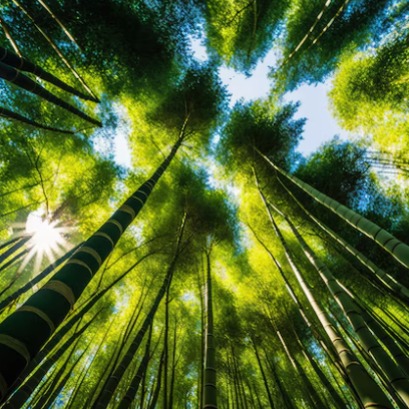
The Paraná Delta bets on bamboo as an innovation and livelihood engine
In the Delta del Paraná, the bamboo, known as plant steel, is positioned as a sustainable alternative. Its rapid growth and versatility open new opportunities for the local economy, promoting innovative projects
In the Delta del Paraná, that corner of Argentina where forestry, fruit and tourism coexist, an unexpected crop begins to gain space: bamboo. Although many associate it exclusively with Asia, this plant also has history and present in Buenos Aires territory. The first bamboo plants reached the Delta between 1850 and 1950, when used as curtains to protect the fruit and erosion fruit trees on the coasts, explained Martina Halpin, professor of the Faculty of Agronomy of the UBA. Those cane, planted as auxiliary crop, survived even the fruit crisis of the middle of the last century and remained standing, adapting to the wet environment of the region. Today, in tune with global trends that revalue this resource, the bamboo is emerging as a sustainable and versatile alternative. His rapid growth - he can reach a meter in a week - and his resistance earned him the vegetation steel nickname. Bamboo is not a tree, it is a giant grass. What it does is swell its internal walls over time, which gives it a surprising structural capacity, said Halpin. In the Delta, four temperate species develop strongly. Some, such as phyllostachys viridis, can reach 15 meters high and 10 centimeters in diameter. The important thing is to harvest at the optimal moment, between 3 and 5 years, when the cane already has the maturity necessary to resist greater loads, added the specialist. The resurgence of the bamboo is also due to the work of local organizations. The Delta Origin Cooperative groups some 40 families that drive their use. We are in an industrialization process, Halpin said. There are those who manufacture musical instruments in the Suflaifla project. Others build domes and fences, and I work with edible outbreaks, which are very popular in Asia and here they have enormous potential as healthy and sustainable food, he added. The initiatives do not stay there: boards, trays, natural cosmetics cases and even furniture prototypes are made from this raw material. The perspective is clear: to advance from the crafts to a consolidated industry. For Halpin, that jump requires state accompaniment, as happened at the time with the afforestation of wills and poplars in the region. Bioconstruction is a global trend, and bamboo has a huge future in that field, he said. But to achieve this, a systematic production plan will be necessary that adds agronomists, designers, biologists and economists in an interdisciplinary effort. Bamboo can serve for construction, textile fibers, paper, biocarbon activated to purify water ... The possibilities are many, he stressed. While so much, in the cane -venues that grew for more than a century on the banks of Paraná, a new green economy begins to make its way. Bamboo, that giant grass, seeks its place in the Argentine Delta as a sustainable alternative and as a symbol that, in this country, there is still much to discover.
IT MAY INTEREST YOU
 Trees tell stories: the fascinating science of dendrochronology
Trees tell stories: the fascinating science of dendrochronology
A fascinating science, dendrochronology transforms tree rings into a vast archive of climate history, revealing connections between the past and the future. With each ring, a new story of resilience and adaptation comes to life.
 They promote research in pine resins from the NEA
They promote research in pine resins from the NEA
The forestry industry is one of the most important sectors in the economies of Misiones and Corrientes. Thousands of hectares of pine supply the paper, pulp, boards and sawmill industry. Pinus elliottii, one of the species established in the region, in addition to providing wood, is used to produce resin, a non-wood forest product with high demand in the chemical, pharmaceutical and cosmetic industries. In 2\024, resin extraction of approximately 52,6\0\0 tons was achieved from approximately 18,\0\0\0,\0\0\0 trees in production, generating income and jobs with high expansion potential.
 Experts cant believe it, but this tree is the oldest in the world and continues to bear fruit: it is 4,000 years old.
Experts cant believe it, but this tree is the oldest in the world and continues to bear fruit: it is 4,000 years old.
Nature keeps secrets that defy the passage of time, and one of the most surprising examples is a tree that, approximately 4,000 years old, continues to bear fruit today. This specimen has become a symbol of resistance and longevity, capable of surviving climate changes, landscape transformations and human activity itself.





















